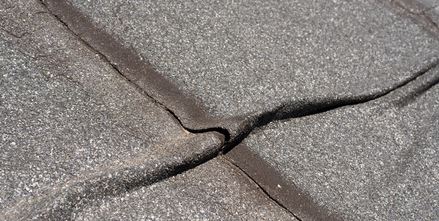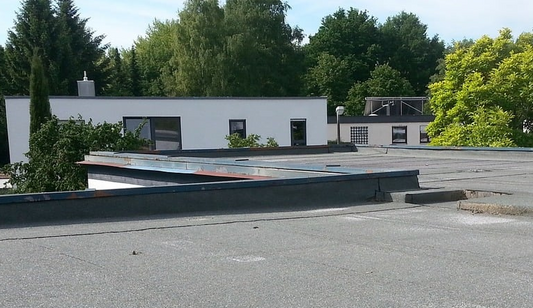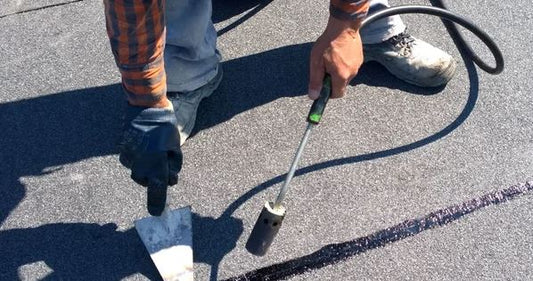When installing a GRP fibreglass roof in the winter months, you'll need to adapt to the elements and take extra precautions.
Start by verifying a clean, dry, and dust-free surface, and guarantee a strong bond between the fibreglass and the roof by removing contaminants. To work efficiently, avoid late starts, finish fibreglassing or topcoating before 2-3 pm, and take steps to prevent moisture from compromising the work.
Protect the deck by coating it with catalysed resin, and cover exposed edges with a Visqueen sheet to prevent moisture uptake. Now that you're ready to tackle the project, you're just a step away from revealing the secrets to a successful winter installation.
Key Points
- Avoid late starts and finish fibreglassing or topcoating before 2-3 pm to allow for sufficient curing time in cold weather.
- Ensure a clean, dry, and dust-free surface by sweeping, blowing away debris, and washing with a degreaser before application.
- Protect the deck by coating it with catalysed resin to seal it from moisture, and cover exposed edges with a Visqueen sheet.
- Adapt to winter elements by taking steps to prevent moisture from compromising the work, such as using a fast mix and blowing warm air onto the area.
Preparation for Fibreglass Work
Before you begin applying GRP fibreglass to your roof, verify you have a clean, dry, and dust-free surface by sweeping or blowing away any debris, and washing the area with a degreaser to remove dirt, oil, or wax.
This step is vital to guarantee a strong bond between the fibreglass and the roof. Any contaminants can compromise the adhesion, leading to potential leaks or damage.
Next, inspect the roof for any cracks or damaged areas that need to be repaired.
Fill them with a suitable sealant or filler, and allow it to dry completely before proceeding.
You should also remove any existing roofing materials, such as old tiles or felt, to create a smooth surface for the GRP fibreglass.
Working With Fibreglass in Winter
How can you guarantee a successful GRP fibreglass roofing project during the winter months when cold temperatures and moisture can complicate the process?
Working with fibreglass in winter requires extra precautions to safeguard a successful outcome. You'll need to be prepared to adapt to the elements and take steps to prevent moisture from compromising your work.
To ensure a successful project, follow these guidelines:
- Avoid late starts: Finish fibreglassing or topcoating before 2-3 pm to allow for sufficient curing time before nightfall.
- Be rain-ready: Stop working immediately and cover the roof with a Visqueen sheet if it starts raining to prevent moisture from seeping into the laminate.
- Protect the deck: Coat the decking with catalysed resin to seal it from moisture if you can't laminate, certifying a dry and stable surface for the fibreglass application.
- Cover exposed edges: Use a Visqueen sheet to prevent moisture uptake, which can compromise the integrity of the fibreglass and cause delamination.
Tips for Successful Application
Proper preparation and attention to detail are crucial as you move forward with the application process, guaranteeing a strong, long-lasting bond between the GRP fibreglass and the roof deck.
Make sure the roof deck is clean, dry, and free of any debris or contaminants. Check the weather forecast beforehand and plan your application during a period of calm, dry weather.
When applying the GRP fibreglass, work in small sections to maintain even coverage and avoid air bubbles. Use a high-quality laminate and follow the manufacturer's instructions for mixing and application. Certify the laminate is mixed thoroughly and applied evenly, using a roller or brush to spread it consistently.
Pay close attention to the edges and corners, where air bubbles and wrinkles are more likely to form. Use a bubble-releasing tool or a heat gun to remove any air bubbles that do form.
Post-Application Care and Considerations
You'll need to allow the newly applied GRP fibreglass roof to fully cure for the recommended amount of time, usually several days, depending on the specific product and environmental conditions. This is vital to guarantee the roof achieves its maximum strength and durability.
During this time, it's imperative to keep the roof clean and free from debris. Avoid walking on the roof or exposing it to heavy rainfall or extreme temperatures. You should also verify that the roof is well-ventilated to facilitate the curing process.
Avoid applying excessive pressure: Refrain from applying excessive pressure on the roof, as this can cause damage to the GRP fibreglass layer.
Monitor for defects: Regularly inspect the roof for any defects, such as blisters or cracks, and address them promptly to prevent further damage.
Maintain a clean roof: Regularly clean the roof to prevent dirt and debris from accumulating and causing damage.
Schedule follow-up inspections: Schedule follow-up inspections to guarantee the roof remains in good condition and to identify any potential issues early on.
Winter Fibreglass Roofing Benefits
Fibreglass is an ideal material for winter applications due to its durability and resilience in various weather conditions. It maintains its strength and flexibility even in low temperatures, providing a reliable roofing solution.
Quick installation: Quick-curing resin is formulated for efficient installation, even in colder temperatures, allowing for successful winter roofing projects.
Water resistance: Fibreglass is inherently water-resistant, providing a reliable barrier against rain, snow, and ice, making it perfect for winter roofing.
Reliability: Fibreglass roofing kits are designed to provide the necessary tools and materials for successful roofing projects, even in harsh winter conditions.
Durability: Fibreglass maintains its strength and flexibility in low temperatures, ensuring a durable roofing solution that can withstand winter's harsh conditions.
Storage and Handling Best Practices
Proper storage and handling of your fibreglass roofing kit are crucial to guarantee the materials remain in excellent condition and are ready for installation.
When you receive your kit, make sure to inspect it for any damage or defects. If you notice any issues, report them to the supplier immediately. Store the kit in a dry, clean area, away from direct sunlight and moisture. Keep the materials off the ground and away from potential water sources. You should also verify the storage area is secure and protected from theft or vandalism.
When handling the fibreglass sheets, wear protective gloves and safety glasses to prevent injuries. Always lift the sheets carefully, using proper lifting techniques to avoid straining your back.
You should also avoid bending or folding the sheets, as this can cause damage to the material. If you need to cut the sheets, use a sharp utility knife and a straightedge to make clean, precise cuts.
Planning and Scheduling Tips
Before you start installing your GRP fibreglass roof, plan your project carefully to avoid weather-related delays and guarantee a successful outcome. Winter weather can be unpredictable, and verifying a thorough preparation is crucial.
Check the weather forecast: Avoid starting fibreglassing if it's below 5°C, as it won't cure. Plan your work around suitable temperatures and avoid heavy precipitation, strong winds, or extremely low temperatures.
Prepare your materials: Confirm the resin, boards, and topcoat are at a suitable temperature before laying the fibreglass. If it's below 10°C, leave the resin in a warm room overnight.
Schedule wisely: Avoid fibreglassing or topcoating after 2-3 pm to allow for sufficient curing time. Stop working immediately if it starts raining.
Monitor and adjust: Keep an eye on the weather forecast and adjust your schedule as needed. Start early in the morning to maximize working hours, and don't apply materials during unsuitable weather conditions.
Applying Materials in Cold Weather
When working with GRP fibreglass roofs in cold weather, you need to take extra precautions to certify the materials are applied correctly and the resin cures properly.
First, make sure the resin, boards, and topcoat are at a suitable temperature before laying the fibreglass. If it's too cold, the resin won't cure properly, so keep them above 5°C. If the ambient temperature is below 10°C, take the resin out of the cold storage the night before to prevent it from freezing.
Plan your application carefully, avoiding fibreglassing or topcoating a roof after 2-3 pm to allow for sufficient curing time.
You can use a fast mix to speed up the process, and if necessary, blow warm air onto the area to aid curing. When measuring the catalyst, use a dispenser to get it accurate, as the resin will be thicker in cold weather and require extra effort to work it into the glass.
Curing and Drying Times
You'll typically need to allow a longer curing time for your GRP fibreglass roof in cold weather, as the process can be substantially slowed down by low temperatures. This is because the resin will be thicker and more difficult to work with, requiring extra effort to mix and apply. To guarantee proper curing, it's vital to avoid fibreglassing or topcoating a roof after 2-3 pm, giving it enough time to set before the temperature drops further.
To ensure proper curing, consider the following tips:
Use a fast mix: This can help speed up curing times in winter, especially when combined with blowing warm air onto the area if necessary.
Measure catalyst accurately: Inaccurate measurements can affect curing times, so make sure to use a catalyst dispenser.
Verify the deck is dry: Moisture can slow down or prevent curing, so verify the substrate is completely dry before laying the laminate.
Plan ahead: Allow extra time for curing and plan your installation schedule accordingly to avoid delays.
Rounding Up
Now that you're equipped with the right prep, application, and post-installation tips, you're ready to tackle that fibreglass roofing project even in the coldest months.
Remember to stay patient, work smart, and don't rush the process.
With the right approach, your fibreglass roof will look great and last long, no matter the weather.




